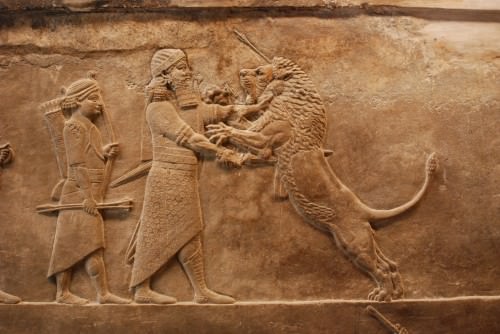Philippe de Montebello, Martin Gayford
Art
A couple of men who really, really love Art go to museums and talk about what they see. Much dialogue ensues.
For me, Rendez-vous With Art is as much a sociological investigation as an artistic one. Now, I'm not a total philistine. I sometimes visit art museums voluntarily. I myself have committed acts of art, and even been paid for them. There are painters I admire greatly (Vermeer, Hopper) and painters I despise (Jackson Pollock, Roy Lichtenstein).
But I do not--I probably cannot--feel about art the way de Montebello and Gayford feel about Art.
I've never stood before a painting and felt ravished. I've never had the feeling that "this must be the best painting ever".
Perhaps this is another divide between the Romantic and the Enlightenment temperaments. For example, at one point, Philippe de Montebello says:
There are may things to enjoy and ravish the eye in the works of Caravaggio's finest followers, but the image that will remain engraved in your memory, the picture that has shaken you, changed you, and that you will not forget, will be by Caravaggio.To which I immediately think: really? Have double-blind studies been done? If so, who was the control group, and what was the level of statistical significance achieved? And ... are you certain that that would be your reaction if you didn't know which picture was a genuine Caravaggio?
I would be willing to bet a moderate amount of money that the answer to the last question is no, by the way. Many studies have shown that people, including wine experts, can't tell the difference in blind testing between cheap wines and expensive ones--but when you tell them a wine is more expensive (even if it's not!) they enjoy it more.
Here's another example. De Montebello looks at this Assyrian relief (which, by the way, I agree is marvelous):
(Image hosted at the Ancient History Encyclopedia)
His reaction:
The king is impassive, invincible ... The king has to be represented in a hieratic, predetermined and specific way ...My reaction: drawing people in lifelike action poses is hard (I know by personal experience). I bet it's a lot harder when you're working stone with early-Iron-Age tools. Maybe the king looks stiff because the artist had hit the limits of his skill.
Perhaps these kinds of reactions are why I--like other engineers of my acquaintance--often prefer illustration to art. The distinction is artificial, and relatively recent, but I think it's a useful one. (I've done both.) Art, as it's currently understood, is an interior and subjective experience, and as such it's exceedingly vulnerable to group-think and critical faddism. Illustration is intended to give a clear, evocative picture. The ideal illustration is one that can be enjoyed by anyone, and will get a fairly consistent response across most viewers.
N. C. Wyeth, for example, was an illustrator, particularly beloved for his adventure book paintings. His wonderful pirate illustrations literally created the iconic "pirate look":
This is a terrific illustration. It's all surface--what you see is what it is--but what a wonderful surface it is!
His son Andrew Wyeth was an artist. His most famous painting is Christina's World:
(Image hosted by the Museum of Modern Art)
Christina's World is intended as art. It leaves everything to the imagination of the viewer. We're free to project ourselves into the picture and react individually.
Nowadays illustration is considered rather coarse and lowbrow; "fine" art gets all the respect. Perhaps I'm limited by my Enlightenment-oriented, engineering-trained mind, but I can't help thinking that this attitude sells the illustrators short. To show a thing clearly, and show it in a way that it's not only beautiful but becomes more real than the reality, is no small matter.



I had a copy of Treasure Island with that Wyeth painting as the cover. It's my all-time favorite pirate drawing. I loved it the instant I saw it, at about age eight.
ReplyDeleteAs it happens I also grew up looking at "Christina's World", since my grandmother had a print of it in her living room. The painting never meant anything to me until I found out that Christina was Wyeth's neighbor and she had some sort of degenerative disease the meant she couldn't walk. Now I look at the painting and find it heartbreaking -- it's literally Christina's entire world; what she sees in that frame is all she will ever see.
I needed context to understand the painting, but I got the drawing immediately. I didn't need to know exactly what a flintlock was, or what the Jolly Roger meant.
If you get the chance, visit the Brandywine Museum. Tons of wonderful illustrations, including a lot of Howard Pyle.
DeleteI think "Christina's World" effectively conveys a sense of longing and distance, but I totally agree that you want the context. Someone without that may sense the isolation, and put a different interpretation on it. Which is fine, because Art. But in my opinion, knowing is always better.